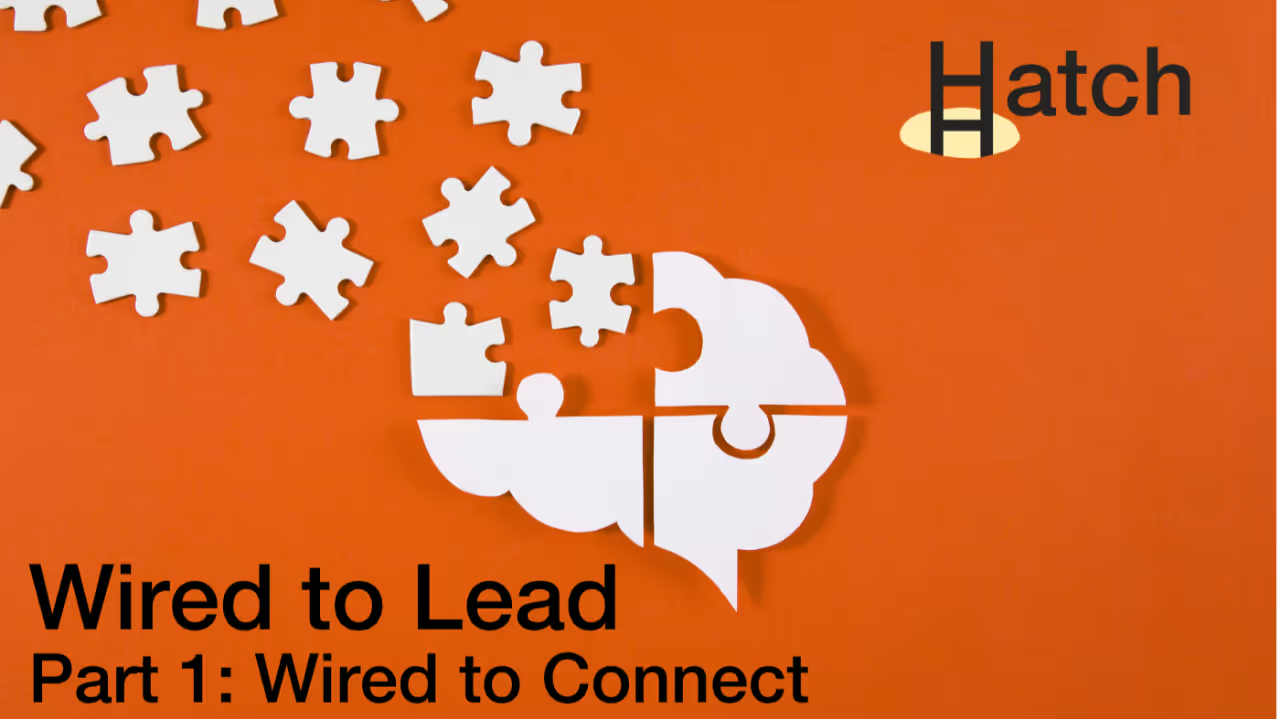
Let’s be real: what makes a team unstoppable isn’t just what they know - it’s how they click. And no, we’re not talking about forced fun or motivational posters in Comic Sans. In today’s workplaces, where change is nonstop and everyone is collaborating across apps, org charts, and time zones, the ability to build trust and shared understanding isn’t optional. It’s what powers momentum, creativity, and actual human collaboration. But here’s the twist: The skills that help us connect - empathy, self-awareness, active listening - often get labeled as “soft,” even though they’re some of the hardest-wired, most biologically baked-in features of your brain. So the next time someone calls them “soft,” tell them your neurons would like a word.
We’re Wired to Connect: The Neuroscience
Let’s take it back to your evolutionary roots. Your brain didn’t just evolve to solve math problems or win arguments on the internet. It evolved to survive through connection - to decode facial expressions, manage status, and keep the tribe tight-knit. From an evolutionary standpoint, social cognition wasn’t a bonus skill. It was survival. In fact, our default brain state, when we're not actively solving a problem, is what's called the "social brain network”. It turns on when we daydream, imagine others' perspectives, or reflect on our own actions.
Here’s the wiring at work:
So when talk about building “soft skills,” what we’re really saying is: Start using your most human hardware to power your team.
3 Critical Capabilities of Wired-to-Connect Leaders
To plug into that social circuitry (and actually use it to lead, adapt, and collaborate), focus on 3 essential and trainable skills:
1. Self-Awareness: Know Your Inner Signal
You can’t steer what you don’t sense. Self-awareness means noticing your moods, triggers, and micro-reactions before they hijack your meetings. It’s your internal feedback system for leading with intention instead of autopilot. Learning how those social smoke alarms work in the insula and anterior cingulate - and how to rewire for speed, strength, and connection - helps us spot when bias might be influencing a decision, or when our stress is spilling into how we give feedback.
2. Empathy: Feel With, Not For
Empathy isn’t a personality trait. It’s an active process of tuning in, reading cues, and adjusting accordingly. Empathy (and its more rewarding neighbour, Compassion) builds connection, alignment, and trust - but only if it comes with boundaries. Too much empathic overdrive? Say hello to burnout. Practicing real-world scenarios in an environment of trust and vulnerability finds the neuroplastic balance between the empathetic mirror neuron system and the compassionate prefrontal cortex that strategises action within realistic boundaries.
3. Active Listening: Signal Safety, Build Trust
This isn’t just smiling and nodding. It’s strategic, skilful attention. The best listeners create space for real talk, clarify assumptions, and make people feel seen. That kind of listening activates a complex dance between the auditory cortex, language centres, and social brain circuits, especially when we focus on both what is said and how it’s said. It’s a form of interpersonal precision - mirroring tone, checking emotions, asking questions, and leaving space for others to think. Done well, it signals psychological safety and opens the door to honest feedback and innovation.
From Evolution to Execution
When leaders build these brain-based skills, teams don’t just get along - they align faster, adapt more fluidly, and challenge one another more constructively. Working from brain-behaviour insights helps us move from generic advice to targeted, high-impact practice. The science gives us more than buzzwords. It gives us tools. Because when teams are wired to connect, they’re wired to power up.
Want to Lead from the Brain Up?
Wired to Connect is the first pillar in the new Wired to Lead series by Hatch. A neuroscience-backed, human-based approach to building the soft skills, attitudes, and behaviours that today's leaders need. Next up: Wired to Influence and Wired to Adapt.
Are you based in the United States and curious about Wired to Lead? Feel free to join us at our special online event Wired to Lead: Connecting Your Brain to Leadership Science